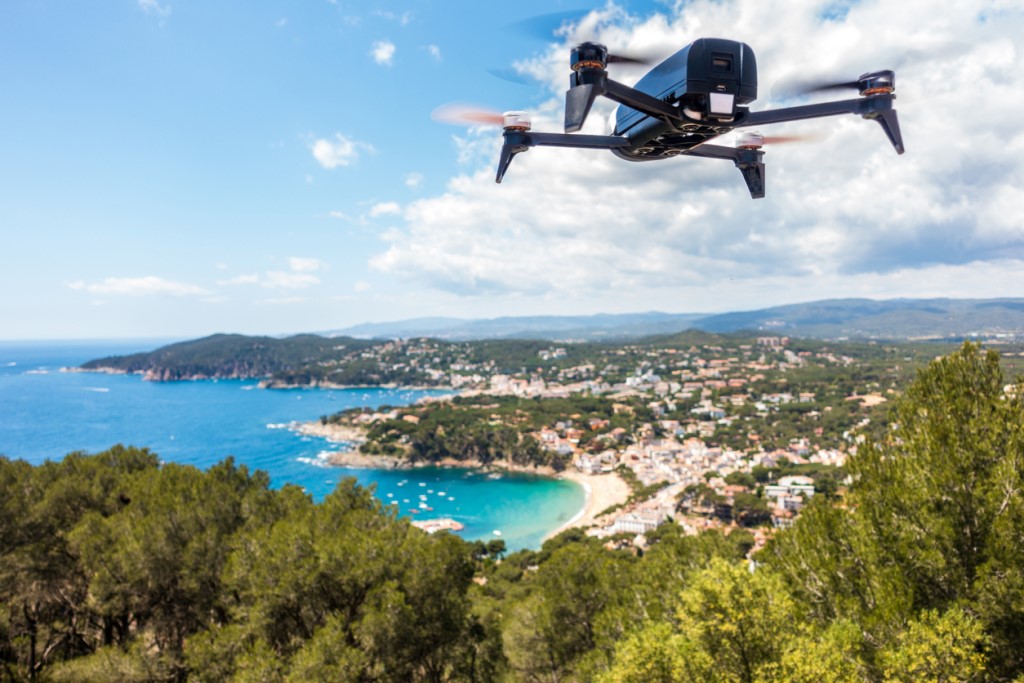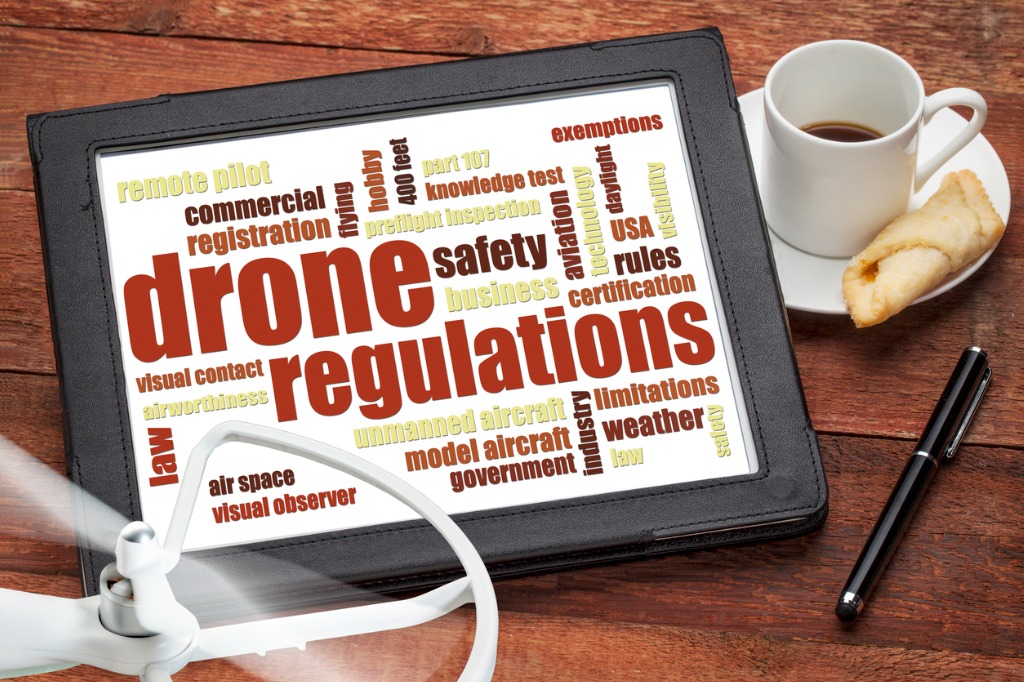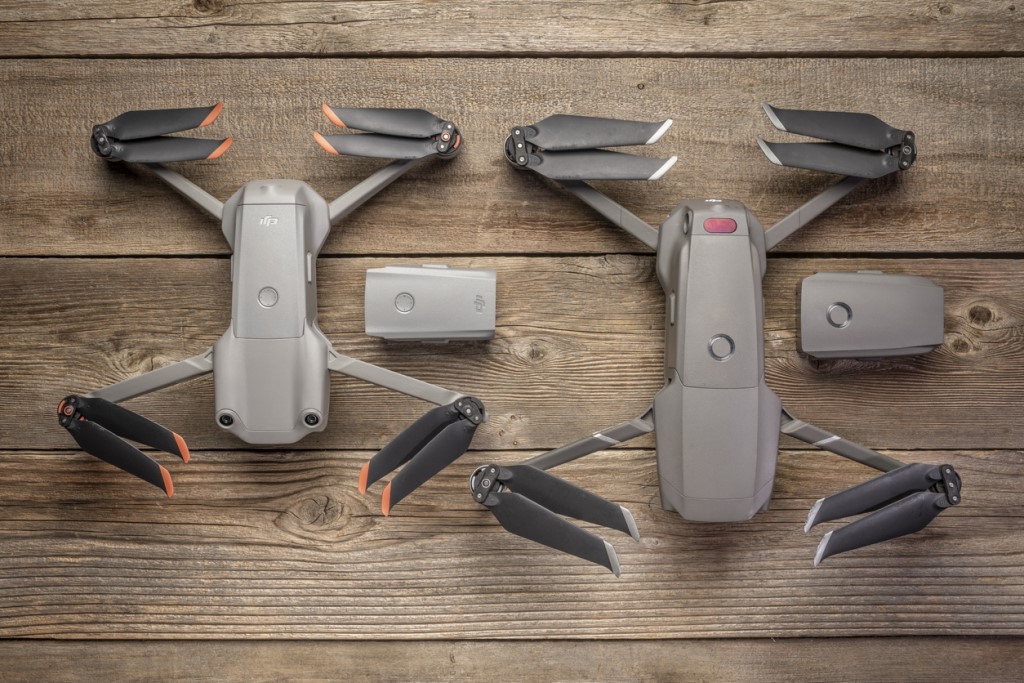Drone Videography Tips

photo by helivideovia iStock
Are you the owner of a sparkly new drone? Congratulations, drones are a ridiculously fun and amazing tool for videographers that I guarantee will elevate your filmmaking to the next level!
Using drones, you can now get a bird’s eye view and capture perspectives that you never imagined possible! Epic landscapes, spectacular tracking shots, and stunning selfies are merely a few of the scenes you will be able to capture with your drone.
They don’t fly themselves though (at least not all the time!) and learning where, when, and how to properly fly your drone is super important if you wish to be the best pilot you can be.
In this article you will first learn exactly what drone videography is, followed by four simple drone videography tips that will improve your flying immediately!
What is Drone Videography?

photo by Eloi_Omella via iStock
Drone videography, or aerial filmmaking, is simply defined as the art of using a drone to record video.
If you wanted to shoot aerial footage in the past, it had to be done using a helicopter. This is extremely expensive, and not a viable option for the average shooter. However, with the introduction of drones to the public in recent years, everyone now has easy access to drone videography.
Drone Videography Tip #1: Know The Rules and Regulations

photo by marekuliasz via iStock
If only it was as simple as buying a drone and flying it anywhere you liked. Unfortunately, that is not the case and there are laws that must be followed when using your drone. Here are the most crucial things to keep in mind.
How big is your drone? If it weighs more than 250g you will have to register for an FAA identification number, which costs $5. If it weighs less than that, no FAA identification number is required.
Are you shooting drone videography for fun or do you plan to make money from your footage? If you are simply flying for fun, it’s free and easy to fly. You still have to do a basic registration process, but it takes less than an hour to complete. On the other hand, if you are going to be using your drone for professional videography you need to receive a separate certification.
Where can you fly a drone? Here is a quick list of basic drone videography flying rules:
Fly below 400 feet Don’t fly in restricted airspace or near airports Keep your drone within sight at all times Don’t fly over stadiums or sporting events Flying in National Parks is prohibited Don’t fly close to emergency response efforts such as fires
Failing to comply with these regulations can result in large fines and even the loss of your drone license.
Learn More:Step Up Your Video Game With These DJI Drone Tips Drone Photography Tips for Absolute Beginners Drone Videography Tip #2: Learn These Simple Drone Shots

photo by cicerocastro via iStock
There are seven simple and easy-to-learn drone videography techniques that every pilot should have in their arsenal and here they are!
Reveal shots Tracking shots Panning shots Flying upward shots Orbit shots Overhead shots Dolly zoom shots
Once you have learned these basic shots, you are now prepared for 99% of all drone videography situations. Now it’s up to you to PRACTICE, PRACTICE, PRACTICE in order to figure out which ones you like to use and master them!
Drone Videography Tip #3: Always Be Prepared

photo by nullplus via iStock
As in anything else, planning is a critical step in drone videography. The first stage in planning is making sure you have all your drone settings set up how you want them. This includes image quality, frame rate, gimbal sensitivity, etc. Once you have these set initially, you should rarely if ever have to adjust them.
Once that’s finished, you will want to make sure you have a clear idea of what exactly you are shooting. People, landscapes, events, etc. With this in mind you can make a decisive plan of what you want to accomplish during your shoot and what types of shots you will need to use.
After that, you should take into consideration the weather and lighting conditions. If it’s rainy or windy when you were planning on flying, see if a different time of day is better. If not, you may have to change your plans and try again another day.
Lastly, prepare your equipment and double and triple check it. Is your drone in good condition? Is the drone software and application up to date? Are your batteries, remote, phone, tablet, and anything else you may need fully charged? Do you have ND filters, spare propellers, cleaning tools? Trust me, nothing is worse than being in a beautiful place ready to send up your drone only to realize you can’t for one reason or another!
Drone Videography Tip #4: Have Lots of Spare Batteries

photo by marekuliaszvia iStock
As wonderful as a drone for videography is, one major issue that has not been resolved is poor battery life. The average battery for a mid-range drone will provide you with roughly 15-20 minutes of flight time. If you have a professional one you might be able to push that up to 30 minutes if you’re lucky.
For the majority of us, one battery isn’t enough. And if I’m being completely honest, two batteries probably isn’t going to cut it either. I recommend having a minimum of three fully charged batteries with you whenever you head out, more if possible.
I know the batteries are expensive, but I promise that you will regret running out of battery in a once in a lifetime location more than spending the extra cash.
One additional tip in regards to batteries is to try and always carry an external power bank with you. It’s a great tool to have in your kit and a fantastic way to charge your batteries while out in the field.
Final Words on Drone Videography

photo by Bestgreenscreenvia iStock
Learning to pilot a drone well is no easy task, but if you follow the four drone videography tips I detailed above you will be on the right track! As a bonus to you for getting this far, here are a few more tips and tricks to improve your drone videography!
Practice, practice, practice Start recording before you think you need to, and stop afterwards Use manual camera settings Play around with ND Filters Use intelligent flight modes Relax and slow down Watch videos and learn as much as you can! Learn More:DJI Drone Tutorial: Best Camera Settings for Landscapes The Benefits of Filters for Drone Photography
Categories: Photography
